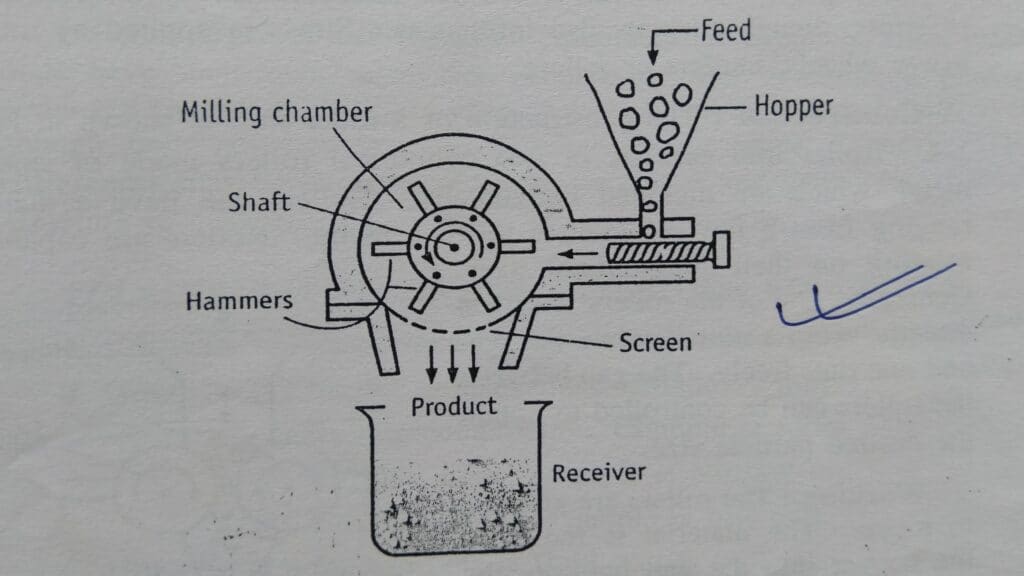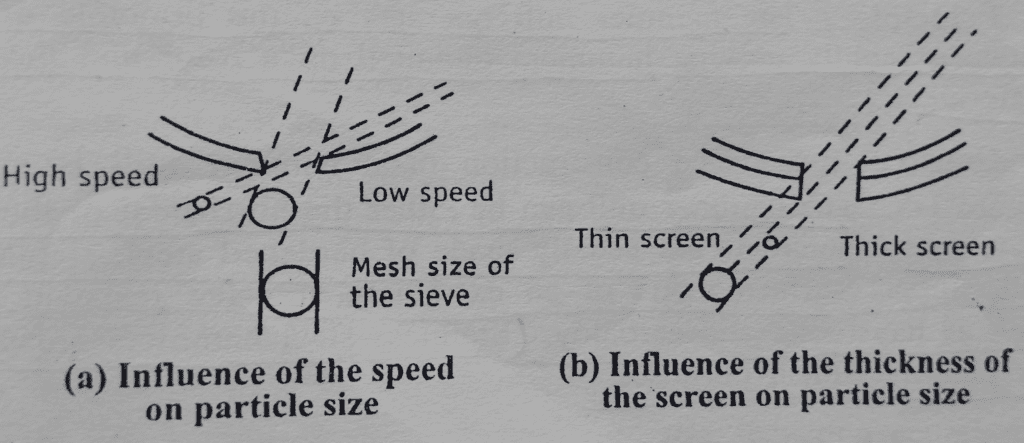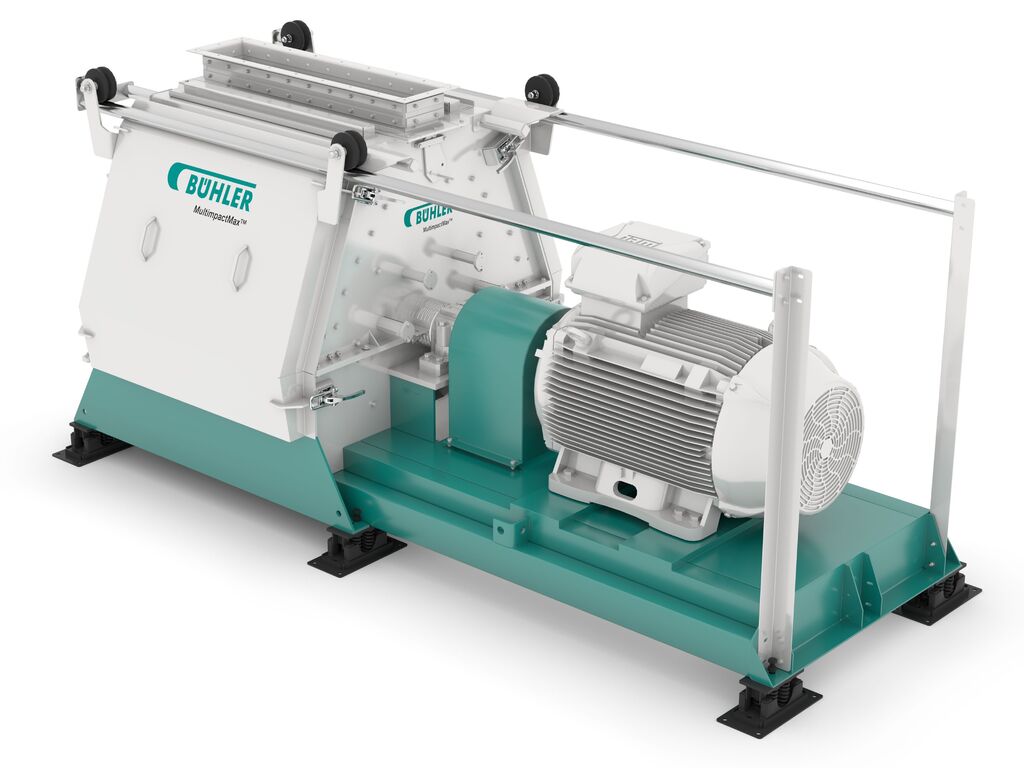Principle
Table of Contents
The hammer mill operates on the principle of impact between rapidly moving hammers mounted on a rotor and powder.
Construction of Hammer mill
The construction of a hammer mill is shown in Figure. The hammer mill can be either the horizontal or the vertical shaft type. Hammers are usually made of hardened steel, stainless steel with an impact surface made of an extremely abrasive resistant material such as haustellate and carboy. Stainless steel hammers are sufficient for pharmaceutical purposes.

Hammers may take several shapes. Two basic shapes are the stirrup and the bar. Bar-shaped hammers are used extensively in tablet granulation. The hammer blades can be with flat edges or sharp edges or both on each side. Hammers may be either rigid or swing-type. The free-swinging type has the advantage that there will be increasing clearance between hammers and screens if excessive build occurs in the mill.
This unit is enclosed with a chamber containing a grid or removable screen through which the material must pass. These screens are not of woven type. Screens are prepared using a metal sheet of varying thickness with perforated holes or slots.
Working of Hammer mill
The hammers are allowed to be in continuous motion (8000 to 15000 revolutions per minute). The feed material is placed into the hopper, which flows vertically down and then horizontally, while hammers are in continuous motion. These rotating hammers beat the material to yield smaller particles. Then, these particles pass through the screen. Due to the tangential exit, the size of the particles is considerably smaller (Figure 2-b) than the aperture of the screen as seen in( Figure 2-a).

The screens are interchangeable so that any grade of fineness car. be achieved. The hammers act as centrifugal fans so that a large amount of air is drawn through the mill. In most cases, this is sufficient to counteract the heat generated during milling.
- The fineness of the product can be regulated by altering:
- rotor speed,
- feed rate,
- clearance between hammers and grinding plates,
- number and type of hammers,
- size of the discharge opening (screen).
Uses of Hammer mill
- Fine to moderate grinding of powders may be obtained, depending on the speed of the hammer. The expected particle size may vary from 10 to 400 mm. Non-abrasive to moderately abrasive, brittle materials can be used as feedstock.
- It is used to mill dry materials, wet filter press cakes, ointments, slurries, etc. Brittle material is best fractured by impact from blunt hammers; fibrous material is best reduced in size by cutting edges.
Advantages of Hammer mill
- Hammer mill is easy to set up (install), dismantle, and clean up.
- Scale-up problems are minimum provided the same type of mill is used.
- Various types of feedstock can be handled using a screen of different sizes.
- Hammer mill occupies a small space.
- It is versatile, i.e., speed and screen can be changed rapidly.
- As it is operated in a closed environment, dust can be reduced and explosion hazards can be prevented.
Disadvantages of Hammer mill
- The screens may get clogged.
- Heat buildup during milling is more, therefore, product degradation is possible.
- Wearing of mill and screen is more with abrasive materials.
- Hammer mills cannot be employed to mill sticky, fibrous, and hard materials.
Variants of Hammer mill
- The examples of hammer mills used in the pharmaceutical industry are:
- Fitzpatrick comminuting machine (Fitz mill)
- Stokes tornado mill
- Fitz mill is used for drugs, roots, herbs, glands, livers, soaps, etc.
- Micropulveriser: Micropulveriser has been used for sugar, chemicals, pharmaceuticals, and cosmetics. The construction is almost the same as shown in Figure 1. The liner of the mill housing is made of multiple serrations, which promote the breakage of particles thrown against the wall by the rotating hammers. An air injection feeder can be used to project the feed directly in front of the hammer tips fitted with tungsten carbide inserts. This arrangement increases mill efficiency. Ball – Powder material
- Hammer crusher and vertical impact pulverizer work on the principle of impact for size reduction.
Make sure you also check our other amazing Article on : Factors Affecting Size Reduction
